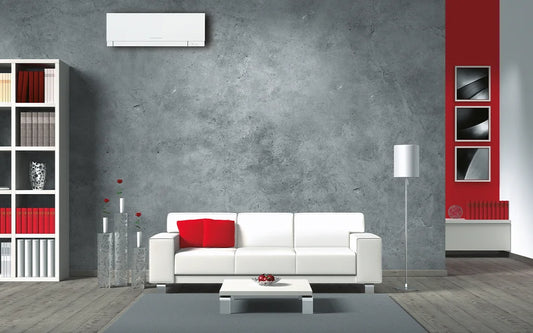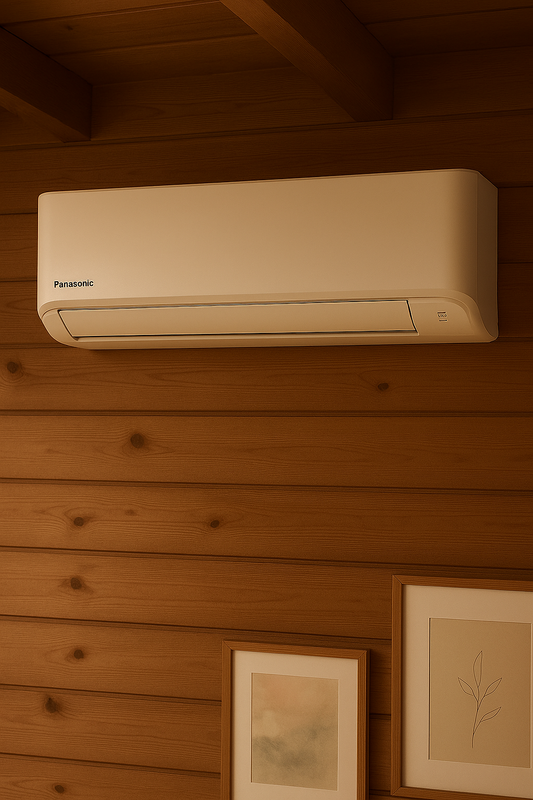Installera luftvärmepump i källare
Att installera en luftvärmepump i källaren kan vara en effektiv lösning för att skapa en behaglig temperatur och luftkvalitet i källaren. I denna artikel kommer vi att utforska fördelarna med att installera en luftvärmepump i källaren, dess användningsområden, relaterade tekniker och vanliga frågor som kan uppstå.
Definition och bakgrund
En luftvärmepump är en apparat som används för att flytta värme från en plats till en annan med hjälp av en kompressions- eller absorptionscykel. När det gäller att installera en luftvärmepump i källaren, är syftet att reglera temperaturen och fuktigheten i utrymmet för att skapa en mer beboelig miljö.
Fördelar och användningsområden
Att installera en luftvärmepump i källaren kan erbjuda flera fördelar. Dessa inkluderar:
- Reglerad temperatur: En luftvärmepump kan hjälpa till att hålla källaren på en önskad temperatur året runt.
- Luftkvalitet: Genom att filtrera luften kan en luftvärmepump förbättra luftkvaliteten i källaren.
- Energibesparingar: Genom att använda en energieffektiv luftvärmepump kan man minska energikostnaderna.
- Fuktkontroll: En luftvärmepump kan bidra till att kontrollera fuktigheten i källaren, vilket är viktigt för att förhindra mögel och fuktrelaterade problem.
Luftvärmepumpar kan användas i olika typer av källare, inklusive bostadskällare, förrådskällare och arbetsutrymmen.
Relaterade tekniker, begrepp eller variationer
Det finns flera olika typer av luftvärmepumpar som kan vara lämpliga för installation i källaren. Dessa inkluderar luft-luftvärmepumpar, luft-vatten värmepumpar och avfuktare med värmepumpsfunktion. Valet av teknik beror på källarens specifika behov och förutsättningar.
Vanliga frågor (FAQ)
Fråga: Är det möjligt att installera en luftvärmepump i alla typer av källare?
Svar: Ja, i de flesta fall kan en luftvärmepump installeras i olika typer av källare, men det kan krävas anpassningar beroende på källarens storlek, ventilation och isolering.
Fråga: Vilken typ av luftvärmepump är bäst lämpad för en källare?
Svar: Det beror på källarens specifika behov och förutsättningar. En professionell installatör kan hjälpa till att välja rätt typ av luftvärmepump för din källare.
Fråga: Vilka underhållskrav finns för en luftvärmepump i källaren?
Svar: Vanligt underhåll inkluderar regelbunden rengöring av filter och kontroll av systemets prestanda av en certifierad tekniker.
Sammanfattning
Att installera en luftvärmepump i källaren kan vara en effektiv lösning för att skapa en behaglig miljö med optimal temperatur och luftkvalitet. Genom att välja rätt typ av luftvärmepump och genomföra regelbundet underhåll kan man dra nytta av fördelarna med denna teknik.
Installation Process
The installation process for a heat pump in a basement involves several steps to ensure optimal performance and efficiency. It typically includes:
- Assessment of the basement space to determine the most suitable location for the heat pump unit.
- Installation of the heat pump unit, including electrical connections and refrigerant lines.
- Integration of the heat pump with the existing ventilation system to ensure proper air circulation.
- Testing and calibration of the heat pump to verify its functionality and performance in the basement environment.
Energy Efficiency Considerations
When installing a heat pump in the basement, it's important to consider energy efficiency measures to maximize its benefits. This may include:
- Proper insulation of the basement walls and ceiling to minimize heat loss and improve overall energy efficiency.
- Sealing any air leaks or drafts in the basement to prevent energy wastage and maintain a consistent indoor temperature.
- Utilizing programmable thermostats and smart controls to optimize the heat pump's operation based on the basement's usage patterns.
Case Study: Residential Basement Heat Pump Installation
In a real-life scenario, a residential basement with recurring moisture issues underwent a heat pump installation to address temperature and humidity control. The heat pump not only resolved the moisture problem but also provided energy savings and improved air quality.
The homeowner shared, "The heat pump has transformed our basement into a comfortable living space, and we've noticed a significant reduction in our heating and cooling costs."
Regulatory Compliance and Permits
Before installing a heat pump in a basement, it's essential to ensure compliance with local building codes and obtain any necessary permits. Professional installers are familiar with the regulatory requirements and can facilitate the permit acquisition process.
By adhering to the regulations, homeowners can have peace of mind knowing that their basement heat pump installation meets safety and quality standards.
Installation Process: Additional Considerations
During the installation process, it's crucial to consider the specific ventilation requirements of the basement space. Adequate air circulation is essential for the optimal performance of the heat pump and to maintain a comfortable environment.
Warranty and Maintenance Services
Upon the completion of the installation, homeowners should inquire about warranty coverage and available maintenance services for the heat pump. Regular maintenance by certified technicians can prolong the lifespan of the unit and ensure consistent performance.
Integration with Home Automation Systems
For enhanced convenience and energy management, homeowners may explore the integration of the heat pump with home automation systems. This allows for remote monitoring and control of the basement's climate control system.
Financial Incentives and Rebates
It's advisable to research available financial incentives or rebates for energy-efficient home improvements, including heat pump installations. Many utility companies and government initiatives offer incentives to promote energy conservation.
Environmental Impact
Consider discussing the environmental benefits of heat pump technology, such as reduced greenhouse gas emissions and lower carbon footprint, with homeowners. This can further emphasize the positive impact of installing a heat pump in the basement.
Case Study: Commercial Basement Heat Pump Installation
In a commercial setting, the installation of a heat pump in the basement of a retail establishment led to improved customer comfort and substantial cost savings on heating and cooling expenses. The efficient climate control also contributed to a more pleasant shopping environment.
Regulatory Compliance and Permits: Expert Guidance
Seeking advice from HVAC professionals with knowledge of local regulations can streamline the permit acquisition process and ensure full compliance with building codes. Their expertise can help navigate any specific requirements related to basement heat pump installations.
Indoor Air Quality Enhancement
Incorporating air purifiers or air exchangers in conjunction with the heat pump can elevate the overall indoor air quality in the basement, addressing concerns related to allergens, pollutants, and odors.
Remote Monitoring and Control
Discuss the option of integrating the heat pump with advanced control systems that enable remote monitoring and adjustment of settings. This provides homeowners with greater flexibility and the ability to optimize energy usage based on their schedules.
Financial Incentives and Rebates: Exploring Options
Encourage homeowners to explore available subsidies, tax credits, or utility rebates for energy-efficient home upgrades, including the installation of heat pumps. These incentives can offset initial costs and yield long-term savings.
Environmental Impact: Educating Homeowners
Highlight the eco-friendly aspects of heat pumps, emphasizing their low environmental impact and efficient use of energy. This can resonate with environmentally conscious homeowners seeking sustainable home improvement solutions.


